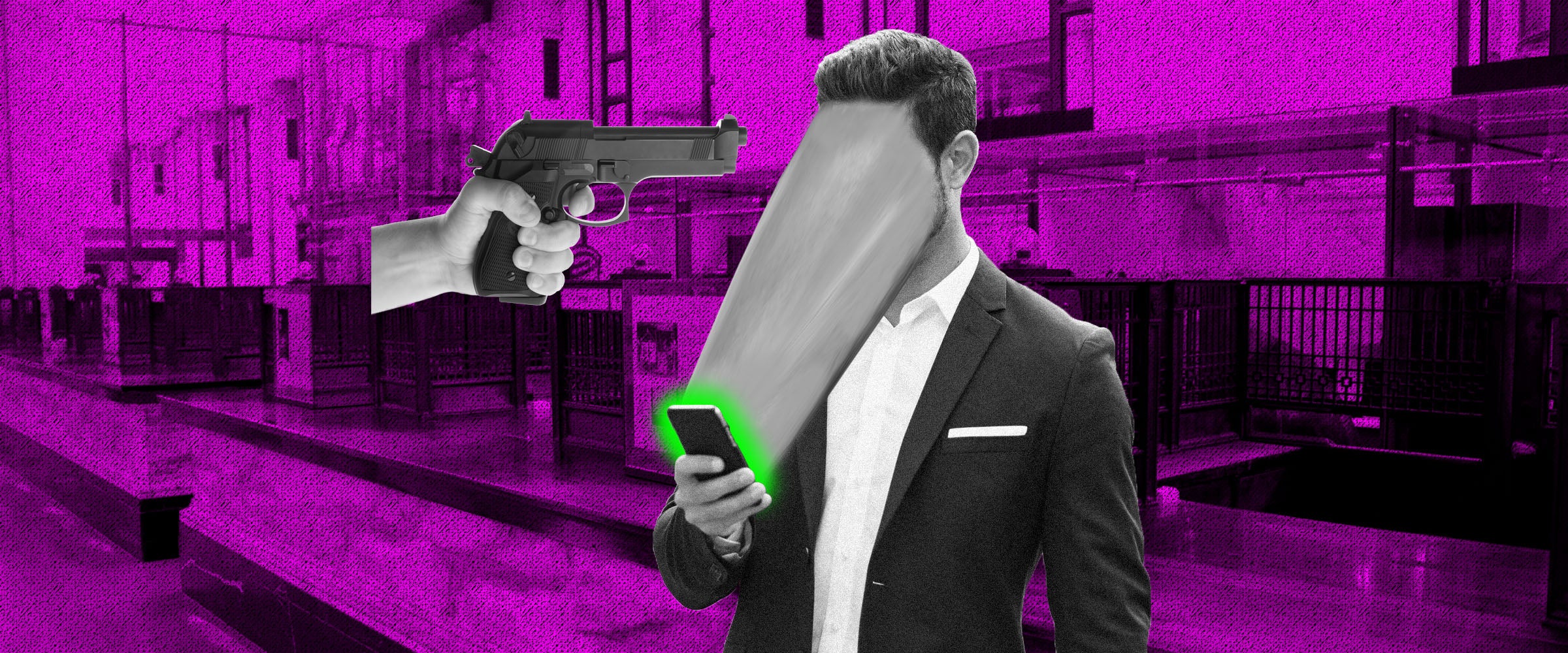It used to be that people couldn’t help but stare into the flames of a terrible car accident, or peer relentlessly into the hydrophilic chaos of a waterfall. And maybe people still do, but increasingly, it’s all about staring mercilessly into that glorious three-by-five inch illuminated screen that fits neatly in your hand and begs you to look even when people around you are on their hands and knees begging for their lives.
That’s right: We’ve reached an entirely new level of smartphone addiction. Forget about all the stories you’ve read and all the studies you’ve ignored about how the reason you can’t stop checking your phone is because you can’t stop anticipating that little dopamine rush every time your phone vibrates or makes that obnoxious sound. That was so passe — so 2017.
Last month, according to a report in the ever-reliable U.K. tabloid The Daily Mail, a Brazilian man didn’t so much as flinch when a gunman forced everyone to the floor at a local bar and robbed the place. “He even laughed when he noticed one of the bar’s 19 patrons was lying face down,” the newspaper reported. “The surprisingly unaware [Carlos] Almeida, 36, continued typing away as he stood near the end of the bar’s countertop as the crook, seen wearing a motorcycle helmet and holding a gun with his right hand, walked right past Almeida, who remained oblivious to the fact the bar was being robbed.”
In 2016, The Atlantic wrote about a study that examined a lesser, although more prevalent version of this phenomenon, known as “phubbing” — essentially, snubbing your present company in favor of your phone. “The most interesting thing this study found was that people who reported phubbing more often were also more likely to be phubbed themselves,” reported The Atlantic. “The authors, from the University of Kent, suggest several possible reasons for this. One is a simple retaliation — if you’re trying to talk to someone, and they’re on their phone, well, two can play at that game.”
By that logic, it would seem that Almeida may have at some point in his life been on the receiving end of some seriously flagrant phubbing. (I’m personally picturing Almeida choking on his food as his date continues to scroll through her Instagram feed.)
But again, the researchers at Kent studied the effect on individuals of being phubbed in a one-to-one social situation — not in a situation in which you and the people around you are in immediate mortal danger. So how could Almeida have found his screen so distracting?
The answer may lie partly in the same reason we can’t stop our eyes wandering to the TV screen in a bar, which I wrote about last year. While researching that piece, Ed Vul, an associate professor of psychology at the University of California, San Diego, who studies intelligence and behavior with a focus on how we process information, told me that our eyes will often be drawn to the most powerful visual cues in any given setting.
“It’s the notion of visual salience — the distinct subjective perceptual quality which makes some items in the world stand out from their neighbors and immediately grab our attention,’” Vul explained. “Some of the most powerful cues to salience are contrast and motion. Things that are bright and moving are more likely to garner our attention. TVs in bars and restaurants will tend to be much more visually active than the rest of the scene — they’re brighter and quickly showcase a range of motion.”
Admittedly, even if Almeida was watching the world’s most exciting high-speed chase scene, it’s hard to believe it would pull him so far out of reality that he wouldn’t realize he was quite literally in the middle of his own crime thriller.
The closest explanation for Almeida’s laser-focused attention to his phone, then, is a phenomenon called “inattentional blindness.” The term, which was first coined by psychologists Arien Mack and Irvin Rock, who observed the phenomenon during their perception and attention experiments, suggests that unless we pay close attention, we can miss even the most conspicuous events. In one such experiment, researchers asked participants to watch a video of people tossing a basketball, and told to count the number of passes.
“Afterward, the participants were asked if they had noticed anything unusual while watching the video. In most of the tests, approximately 50 percent of the participants reported seeing nothing out of the ordinary. But in reality, something odd had happened. In some instances, a woman dressed in a gorilla suit strolled through the scene, turned to the camera, thumped her chest, and walked away. While it may seem impossible that the participants missed such a sight since their attention was focused elsewhere and on a demanding task, the gorilla basically became invisible,” reports Very Well Mind.
According to cognitive psychologist Brian Scholl of Yale University, the research presented psychologists with an understanding of visual perception that they didn’t think was possible. “In contrast with a lot of research on visual perception, these studies are truly surprising for both scientists and laypeople because they’re so at odds with how we assumed vision worked,” Scholl explained to the American Psychological Association.
So by that logic, any one of us could have been Almeida. And about his excuse that the music was so loud he couldn’t hear the requests of the armed robber? It’s not impossible to imagine myself being completely occupied by my cell phone’s screen. Especially if I’d just received a “Can you talk?” text from my girlfriend, which is potentially far more frightening than being mugged.

